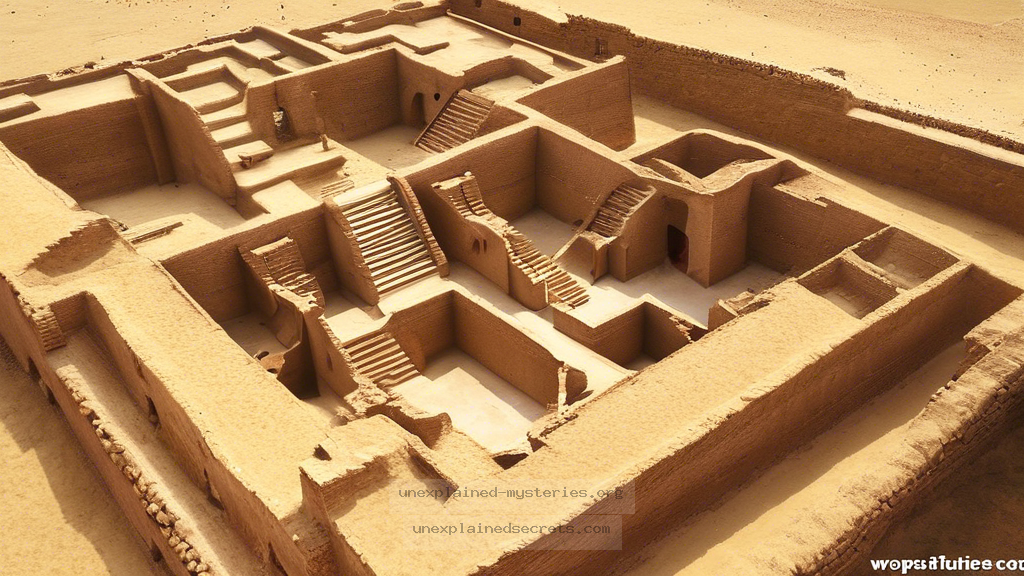What Secrets Lie Beneath the Ruins of the Indus Valley Civilization?
What Secrets Lie Beneath the Ruins of the Indus Valley Civilization?
The Indus Valley Civilization, one of the world’s earliest urban cultures, flourished around 2500 BCE in what is now Pakistan and northwest India. Despite its significant contributions to human history, many aspects of this civilization remain shrouded in mystery. Why did it decline? What caused its cities to be abandoned? And what secrets lie beneath its ruins? This blog post explores these enigmatic questions, offering insights into a civilization that continues to captivate researchers and historians alike.
Historical Context of the Indus Valley Civilization
The Indus Valley Civilization, also known as the Harappan Civilization, was contemporary with ancient Egypt and Mesopotamia, showcasing advanced urban planning, architecture, and social organization. It consisted of well-planned cities like Harappa and Mohenjo-Daro, with sophisticated drainage systems, granaries, and public baths. The civilization thrived due to its strategic location along the Indus River, which facilitated trade and agriculture.
Despite its advancements, the civilization began to decline around 1900 BCE. The reasons for this decline are still hotly debated among scholars. Some suggest climatic changes led to droughts, while others point to possible invasions or trade disruptions. Understanding this decline is crucial as it not only sheds light on the fate of the Indus Valley but also provides lessons on the resilience of civilizations in the face of environmental and social challenges.
Core Concepts: Theories Behind the Decline
Several theories attempt to explain the mysterious decline of the Indus Valley Civilization:
- Climate Change: Evidence suggests that around the time of decline, the region experienced significant changes in climate, resulting in reduced rainfall and prolonged droughts. This would have severely impacted agriculture, leading to food shortages and population decline.
- River Shifts: The Indus River is prone to shifting its course. Some researchers propose that changes in the river’s flow disrupted trade routes and agricultural practices that were essential for the civilization’s survival.
- Invasion Hypothesis: Some theories suggest that invasions by outside groups, such as the Aryans, could have contributed to the civilization’s downfall. However, there is limited archaeological evidence to support this theory.
- Internal Decline: The decline may have been due to internal social and economic issues, such as class struggles, resource depletion, or declining trade relationships with neighboring regions.
Archaeological Discoveries and Evidence
Archaeological excavations in the Indus Valley have revealed a wealth of information about the civilization. Notable discoveries include:
- Urban Planning: The cities were meticulously planned with grid layouts, indicating advanced engineering and urban design skills. Streets were laid out in a precise north-south and east-west orientation.
- Drainage Systems: The presence of complex drainage systems suggests a high level of public health awareness. Homes were equipped with bathrooms connected to these drainage systems, which were remarkably advanced for their time.
- Trade Artifacts: Artefacts including weights, seals, and pottery found at sites indicate a thriving economy based on trade, both local and long-distance.
Despite these findings, the inability to decipher the Indus script—found on seals and pottery—remains a significant barrier to fully understanding their society, governance, and culture.
Comparative Analysis: Indus Valley vs. Other Ancient Civilizations
| Feature | Indus Valley Civilization | Ancient Egypt | Mesopotamia |
|---|---|---|---|
| Urban Planning | Grid-based cities with drainage systems | Pyramids and temples, less uniformity | City-states with ziggurats |
| Writing System | Indus script (undeciphered) | Hieroglyphics (deciphered) | Cuneiform (deciphered) |
| Economy | Trade-based with agriculture | Agricultural surplus, trade | Trade and agriculture with diverse crops |
| Decline Factors | Climate change, potential internal strife | Conquests, internal strife | Environmental changes, invasions |
Common Misconceptions About the Indus Valley Civilization
Several misconceptions persist regarding the Indus Valley Civilization:
- Misconception: The Indus Valley Civilization was a homogenous culture.
Clarification: Evidence suggests a range of cultural practices and beliefs, as seen in the diversity of pottery and seals. - Misconception: The civilization was solely agrarian.
Clarification: It had a robust trade economy, evidenced by artifacts from distant regions. - Misconception: The civilization disappeared completely.
Clarification: While major urban centers were abandoned, some settlements continued to exist and evolved into later cultures.
Practical Implications for Modern Research
Research into the Indus Valley Civilization has several practical implications:
- Understanding Urban Resilience: Studying the urban planning and social organization of the Indus Valley can provide insights into building resilient cities today, especially in the face of climate change.
- Archaeological Techniques: Advances in technology, such as ground-penetrating radar, have revolutionized archaeological practices, allowing for non-invasive exploration of ancient sites.
- Interdisciplinary Approaches: Collaboration between archaeologists, climate scientists, and historians is essential for a holistic understanding of ancient civilizations and their declines.
Future Developments: Ongoing Research and Exploration
Ongoing research into the Indus Valley Civilization continues to yield new findings:
- New Excavations: Archaeological projects in lesser-known sites are uncovering more about regional diversity and interactions.
- Climate Research: Studies focusing on paleoclimatology are helping to clarify the environmental conditions during the civilization’s decline.
- Technological Advances: The use of AI and machine learning is beginning to decipher the Indus script, with promising preliminary results.
These developments hold the potential to reshape our understanding of the Indus Valley Civilization, revealing not only its past but also its relevance to contemporary issues.
Conclusion: The Enduring Mystery of the Indus Valley Civilization
The Indus Valley Civilization remains one of the most intriguing and complex ancient societies in human history. Its advanced urban planning, trade networks, and cultural practices highlight the sophistication of its people. While much remains unknown, the combination of archaeological evidence, ongoing research, and interdisciplinary studies offers a pathway to unraveling the secrets buried beneath its ruins.
As we continue to explore the mysteries of the Indus Valley, we are reminded of the resilience and adaptability of human civilizations. The lessons learned from this ancient culture are not only relevant for historians and archaeologists but also for modern society as we navigate the challenges posed by climate change, urbanization, and social dynamics.
Other Articles
Recent Posts
- What Happened to Flight MH370? The Conspiracy Theories That Still Haunt Us
- What Secrets Lurk Within the Walls of the Infamous Trans-Allegheny Lunatic Asylum?
- What Evidence Supports the Existence of Bigfoot in the Pacific Northwest?
- What Happened to the Indus Valley Civilization? Unraveling the Mysteries of Ancient Urban Life
- Can Telepathy Be Scientifically Proven Through Laboratory Evidence?







